RARE! WWII 1944 Lt. Gen. George Patton’s Third Army "ENCIRCLEMENT OF METZ" Siegfried Line U.S. Soldier Combat Assault Map
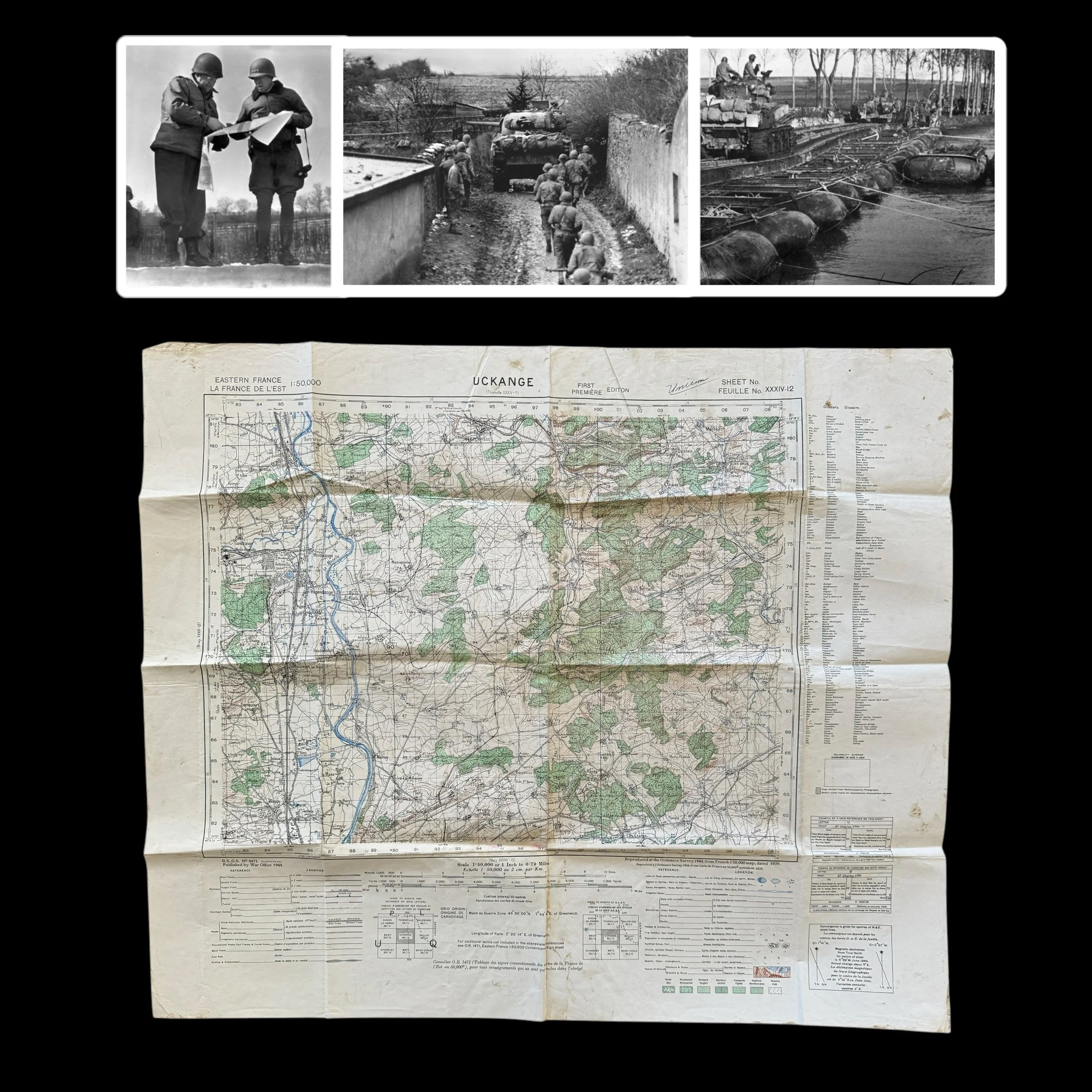

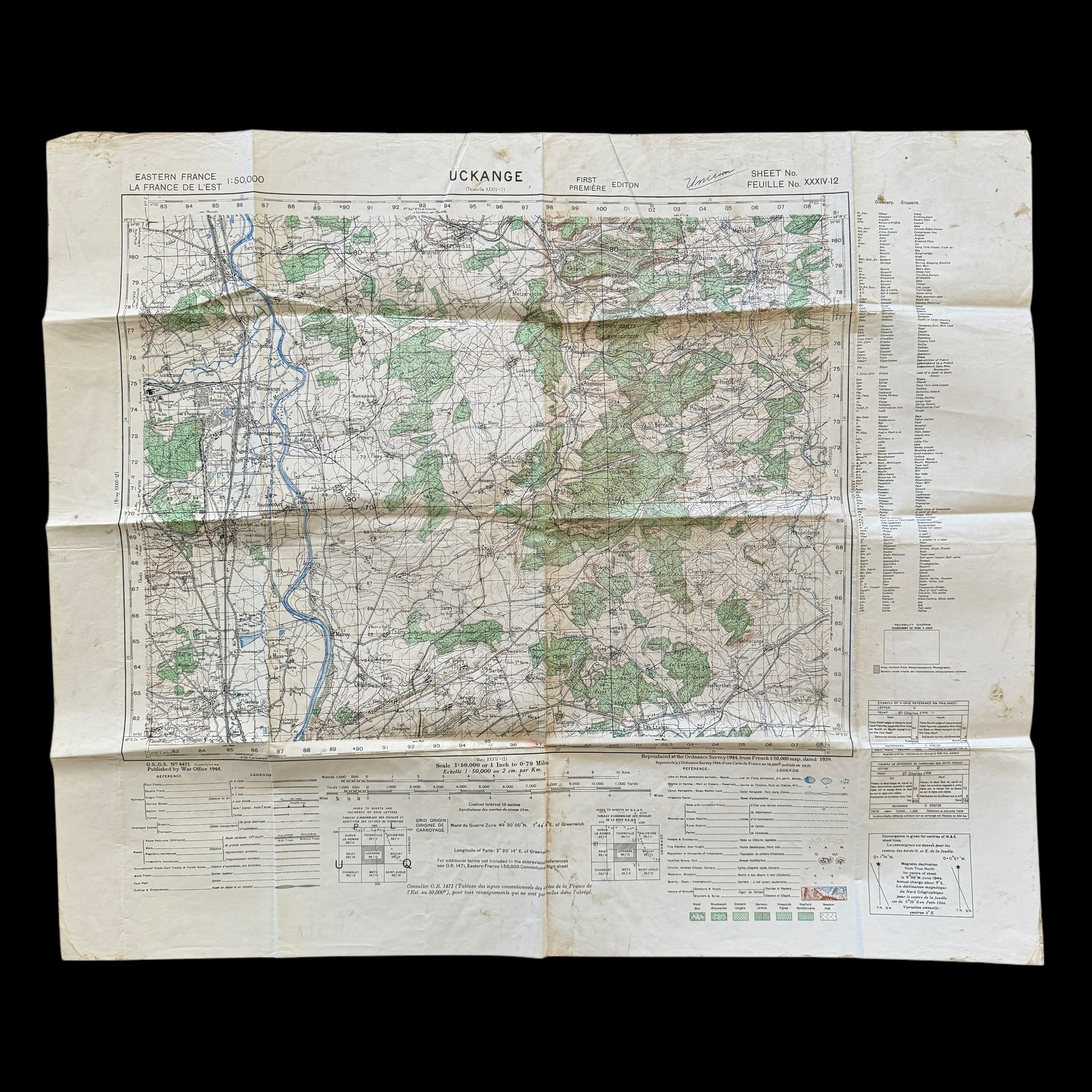
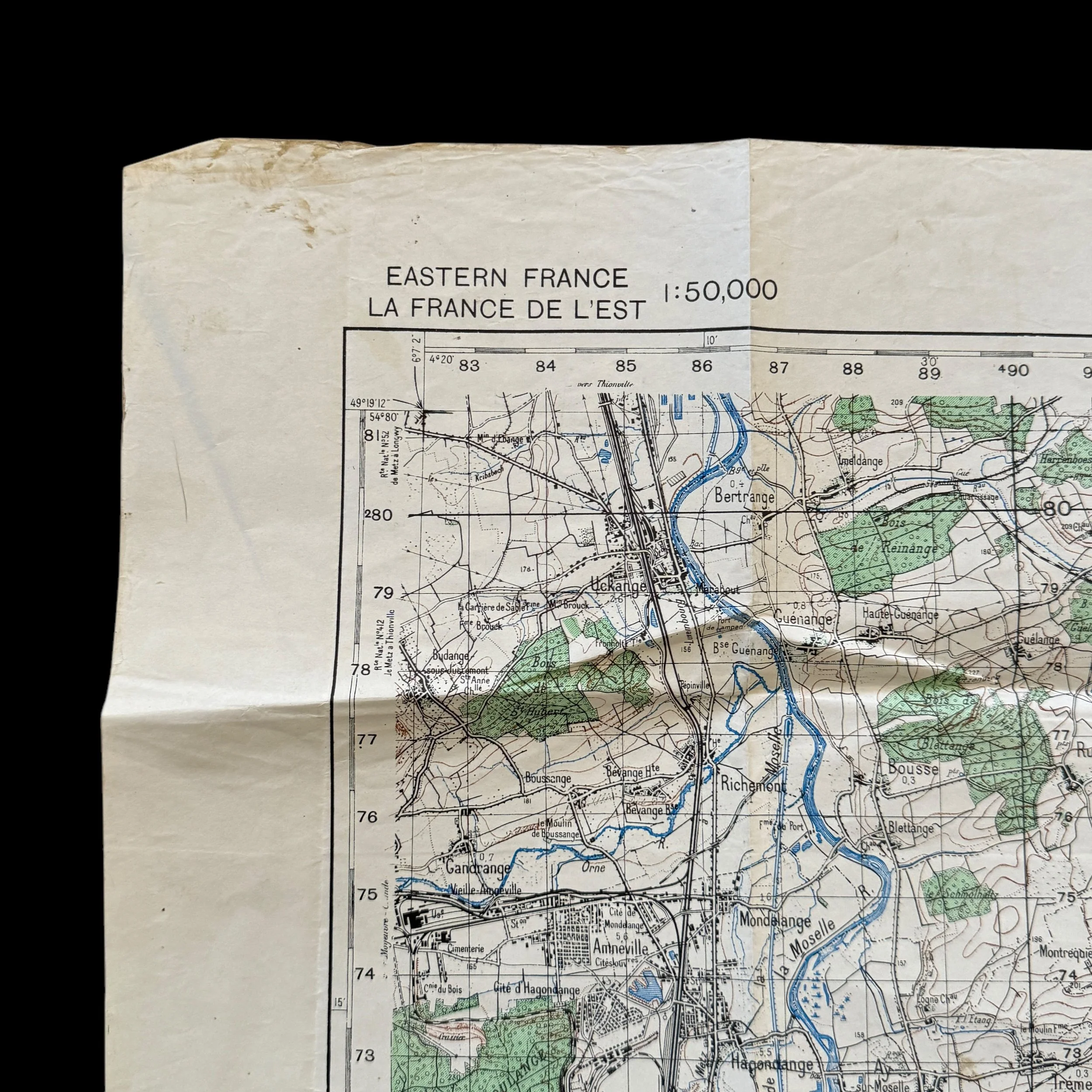
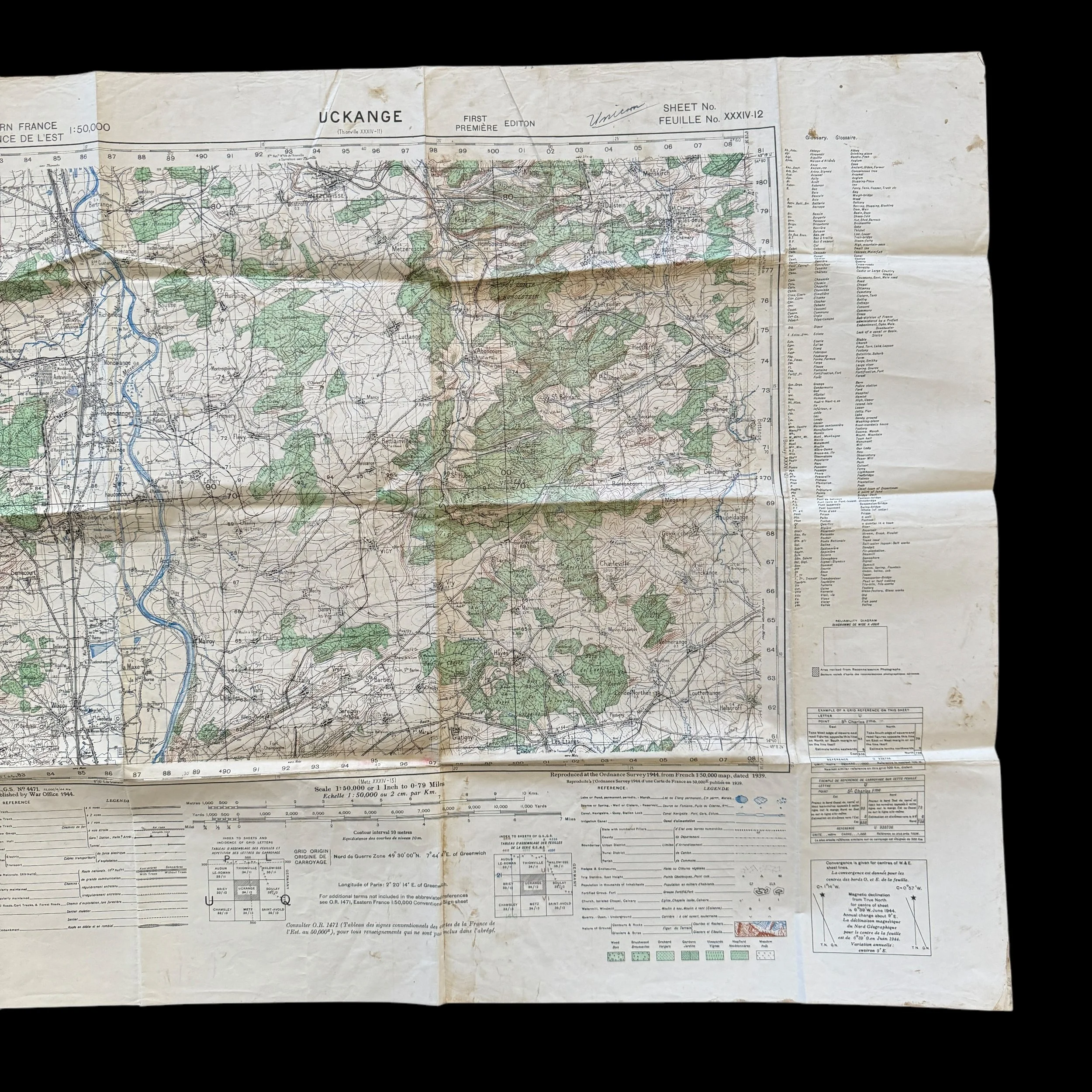
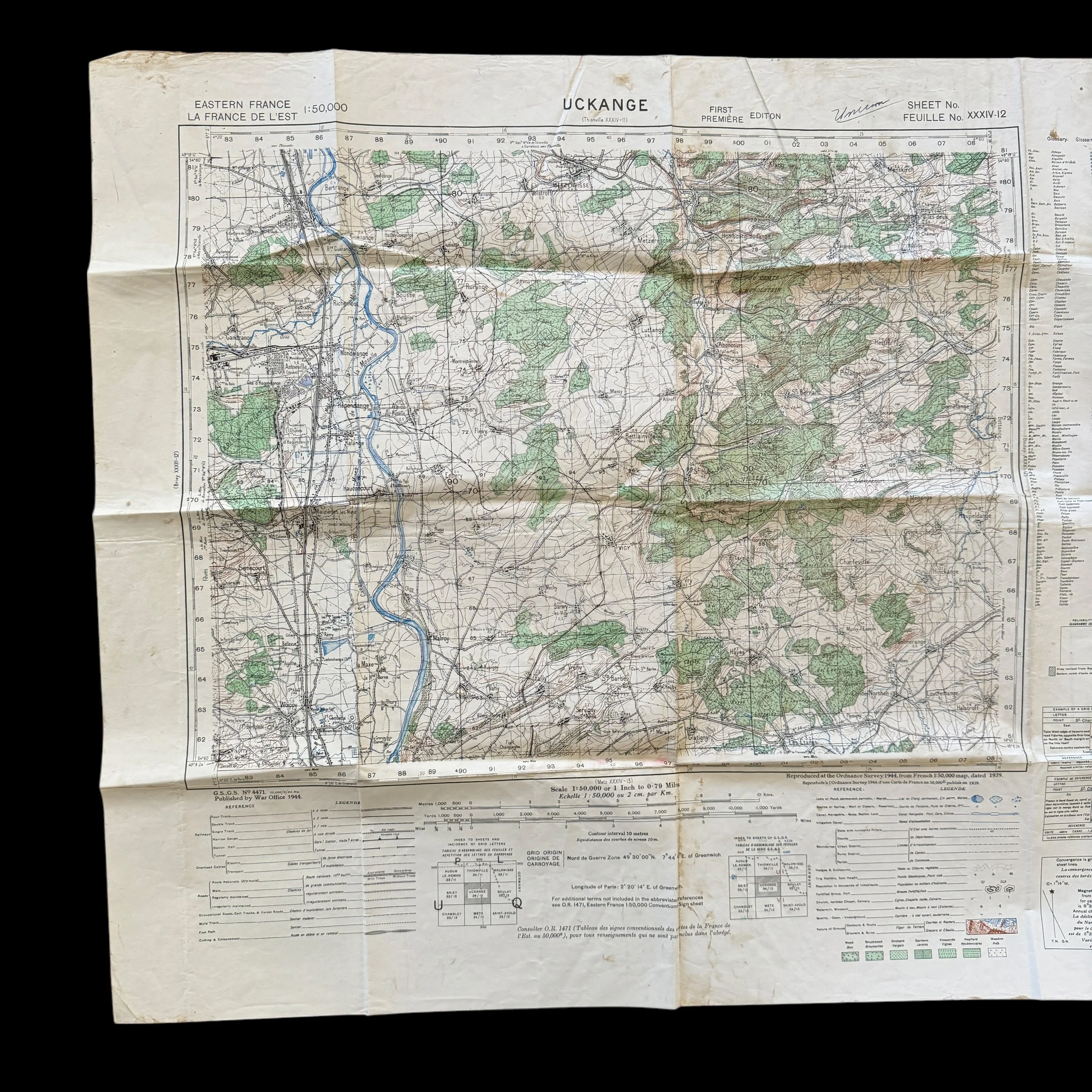
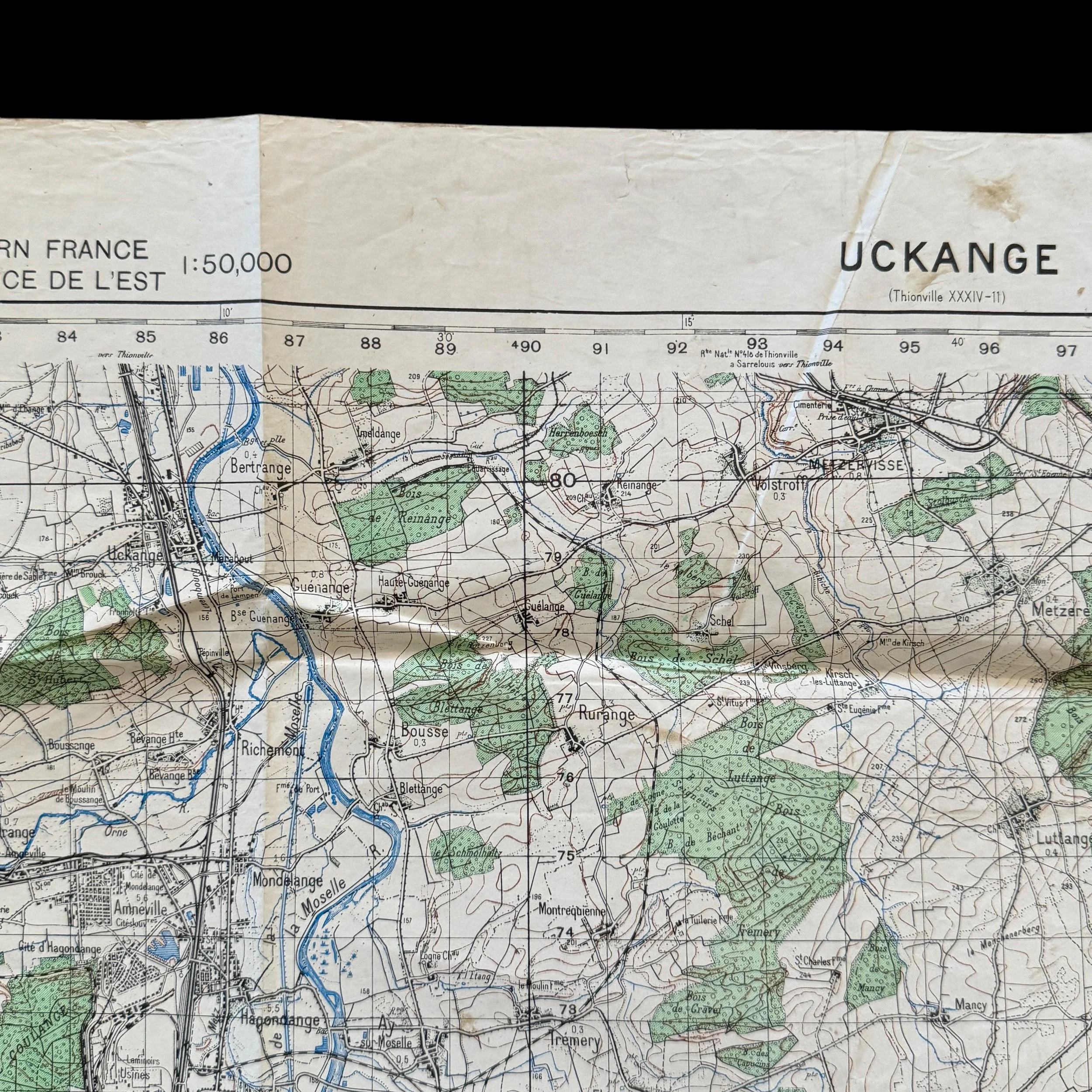
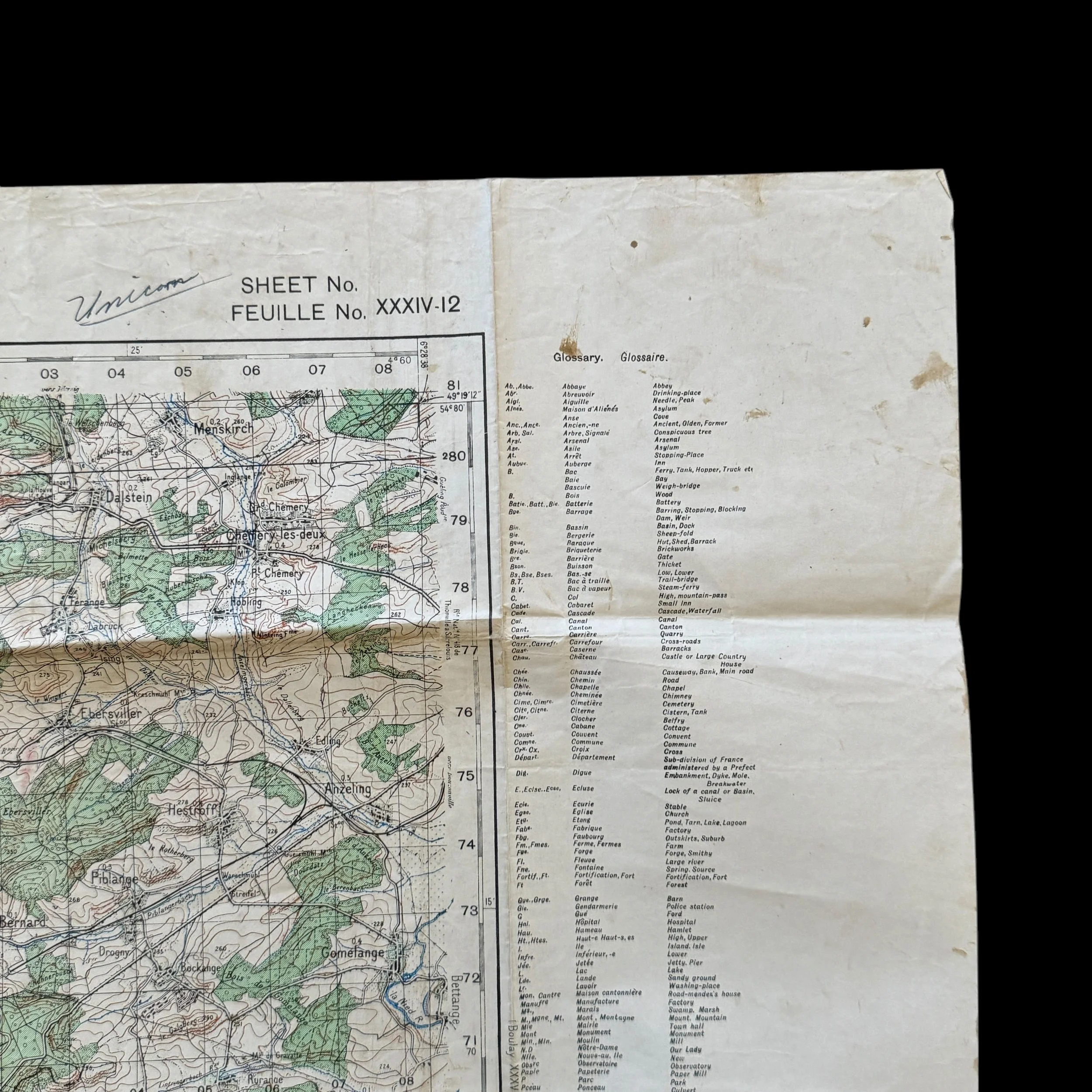
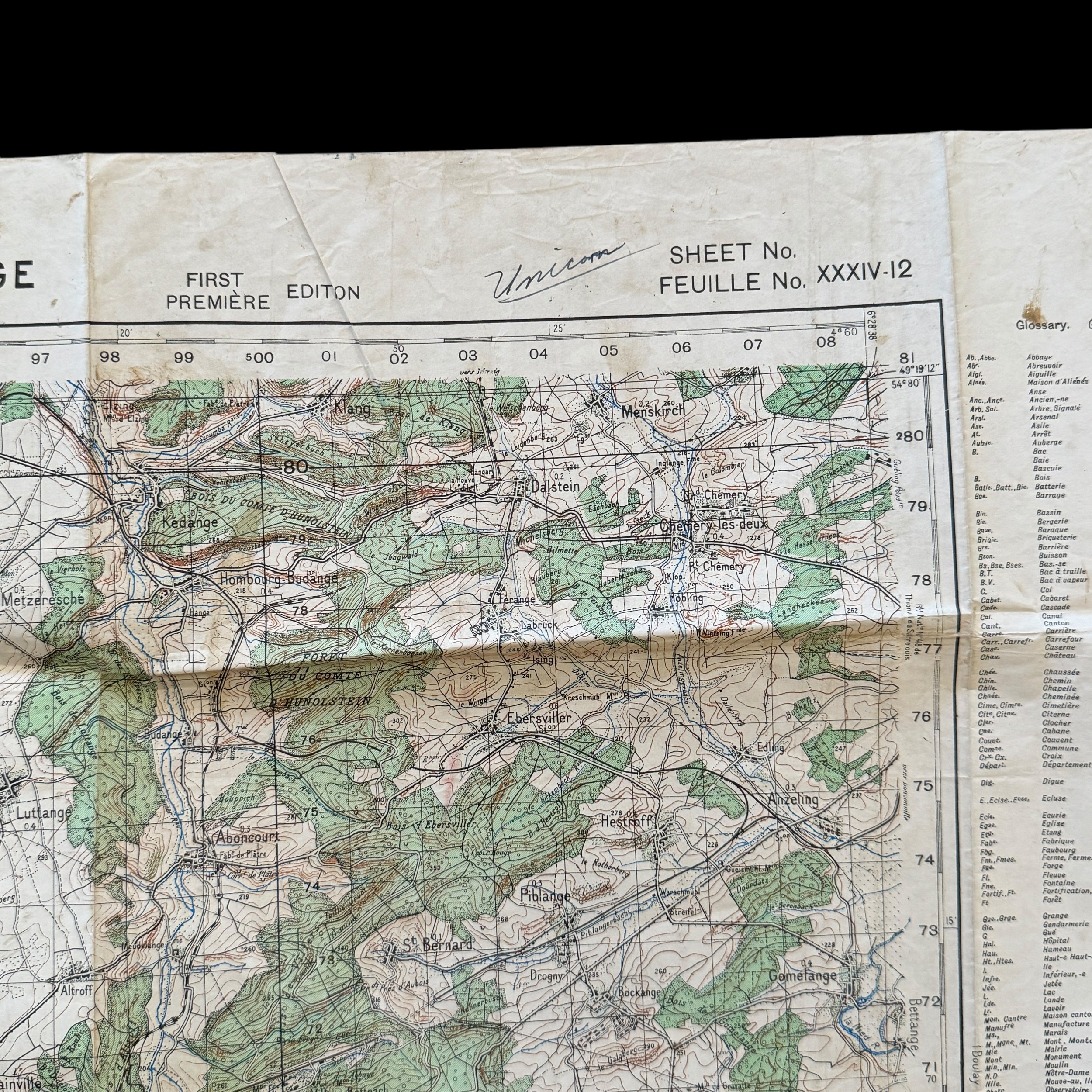

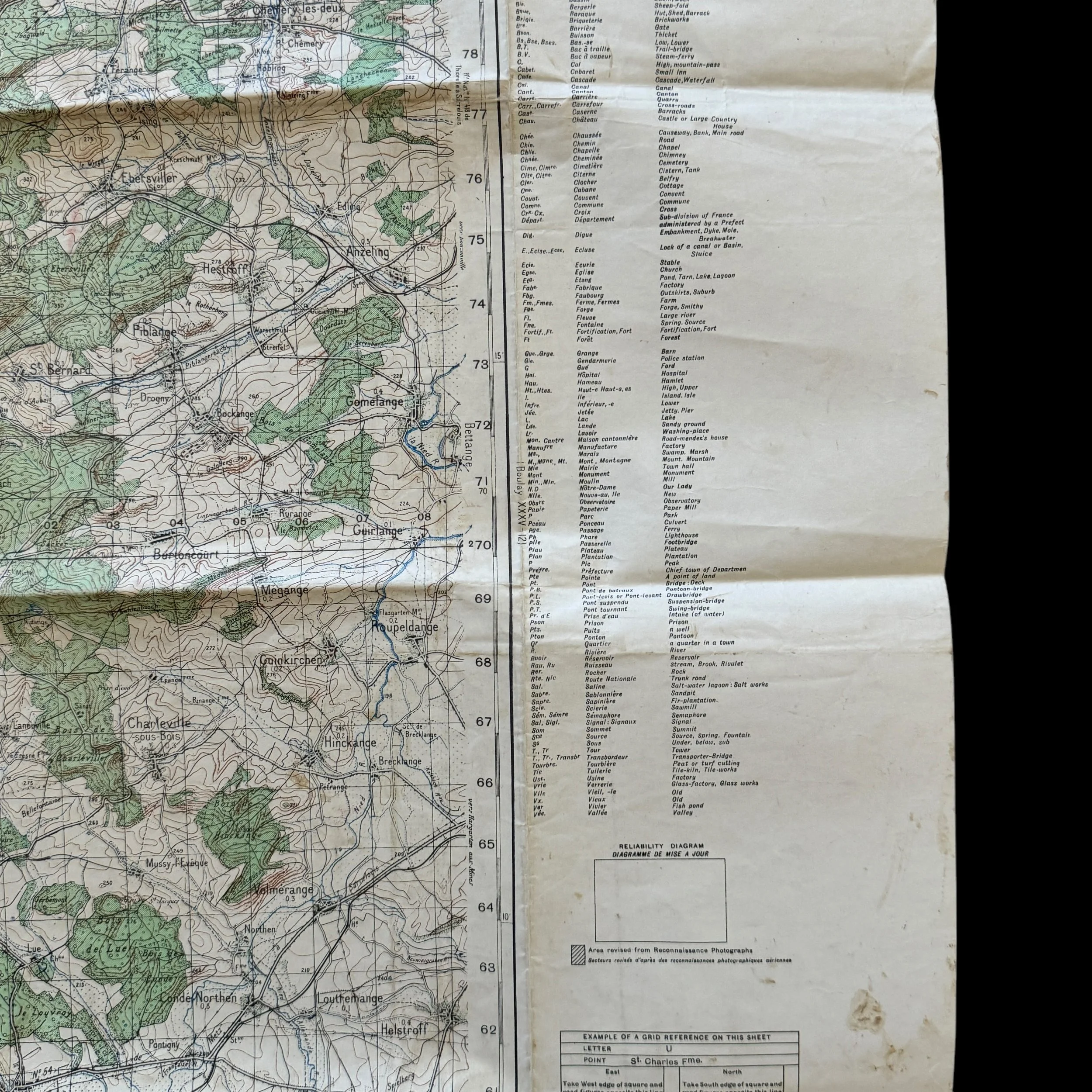
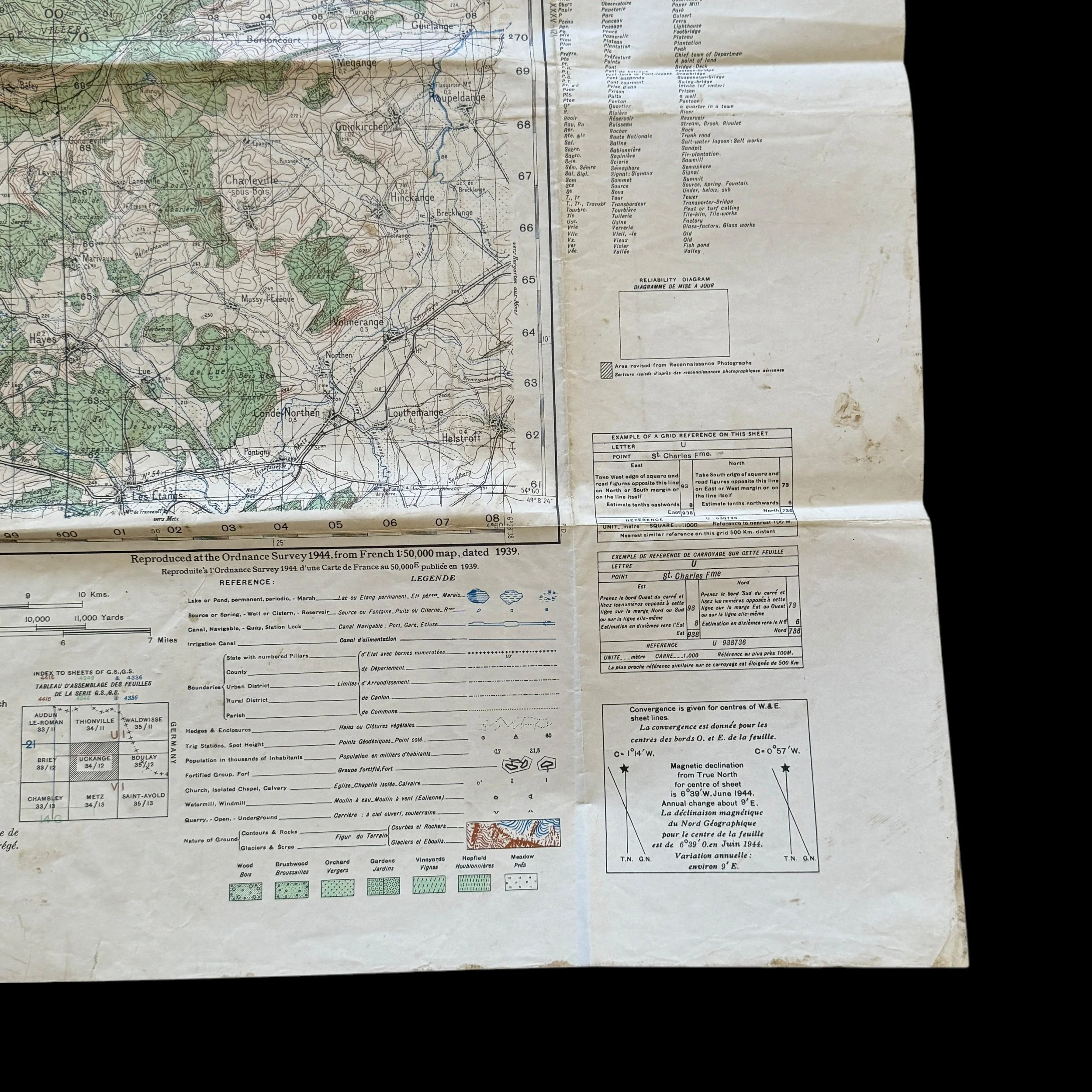
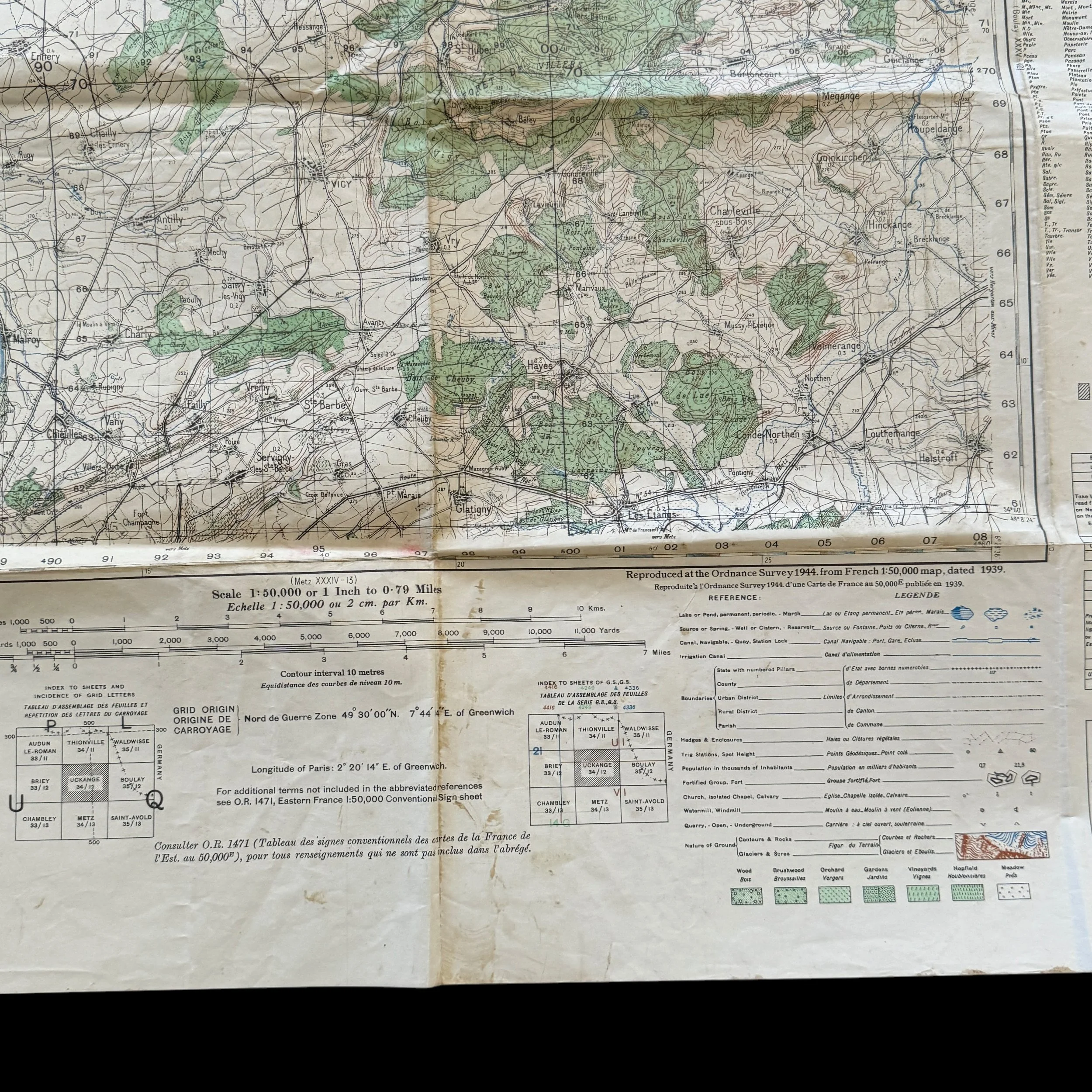
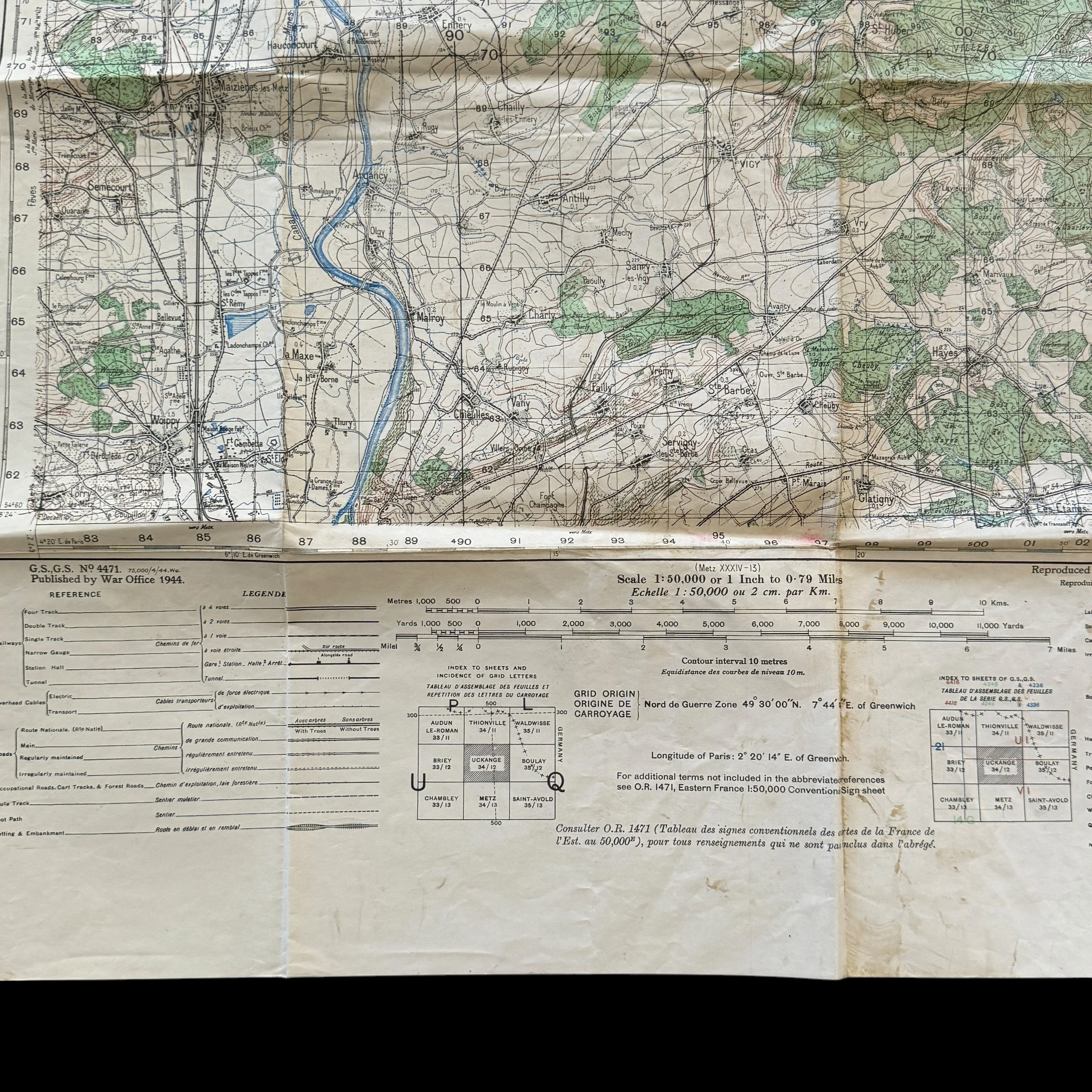
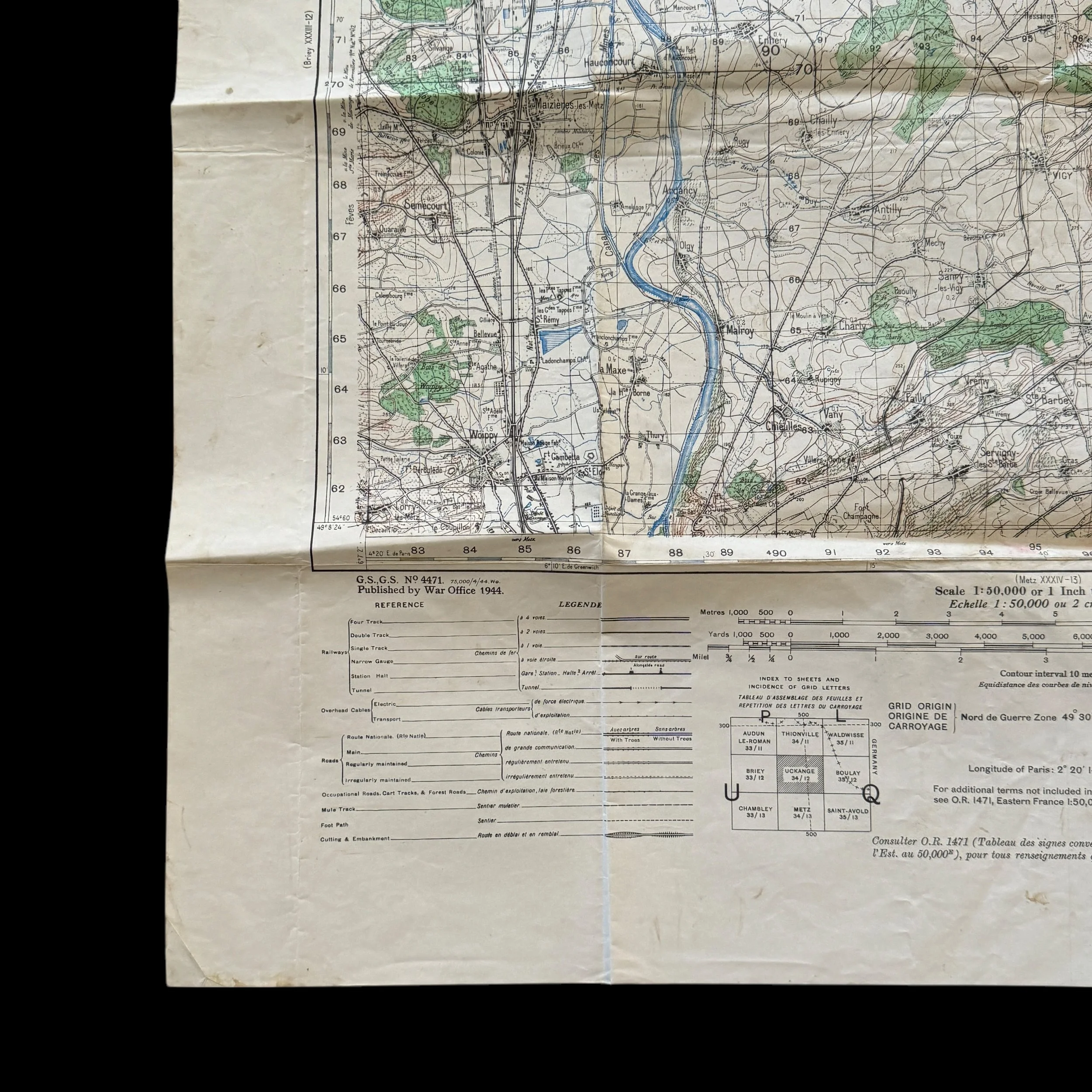

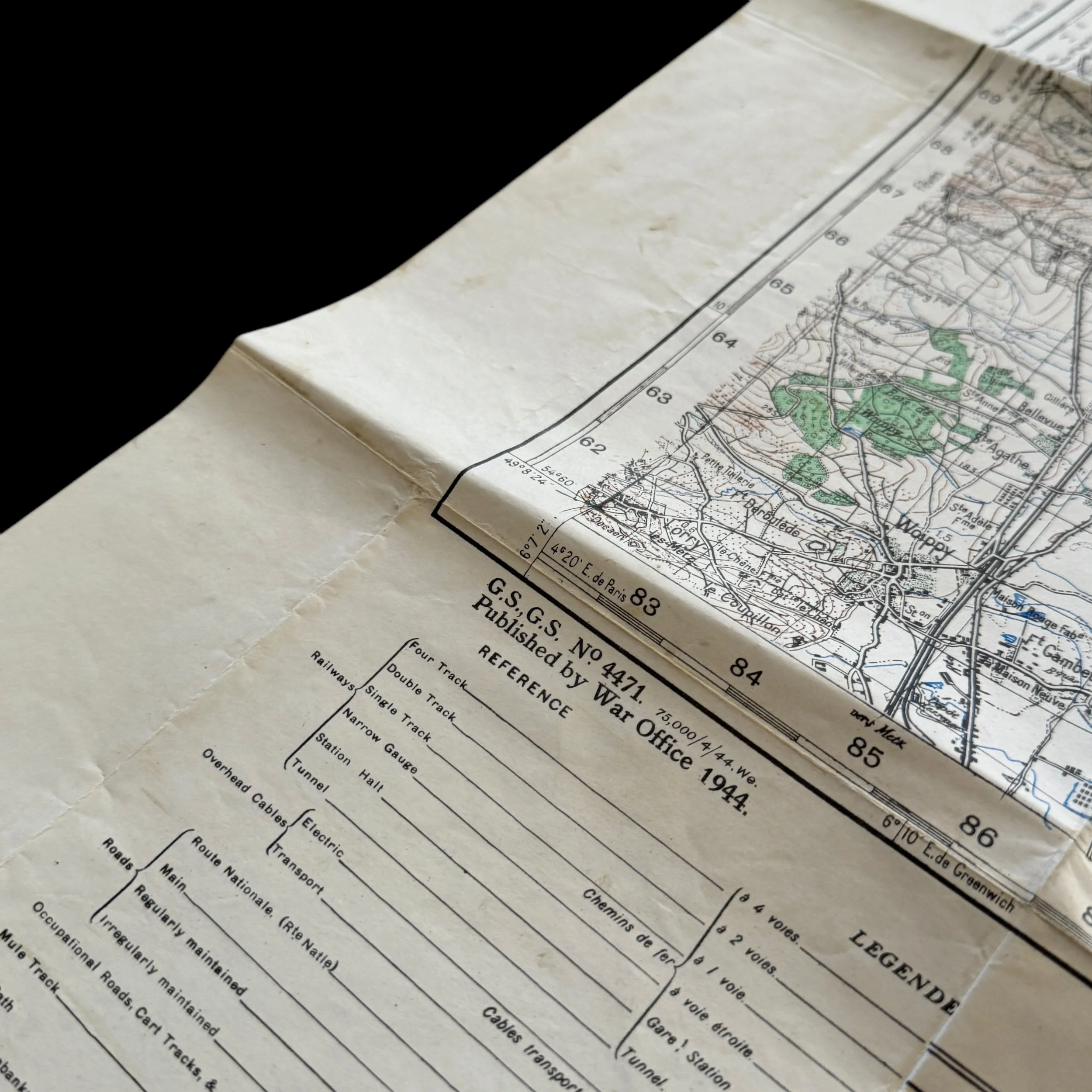
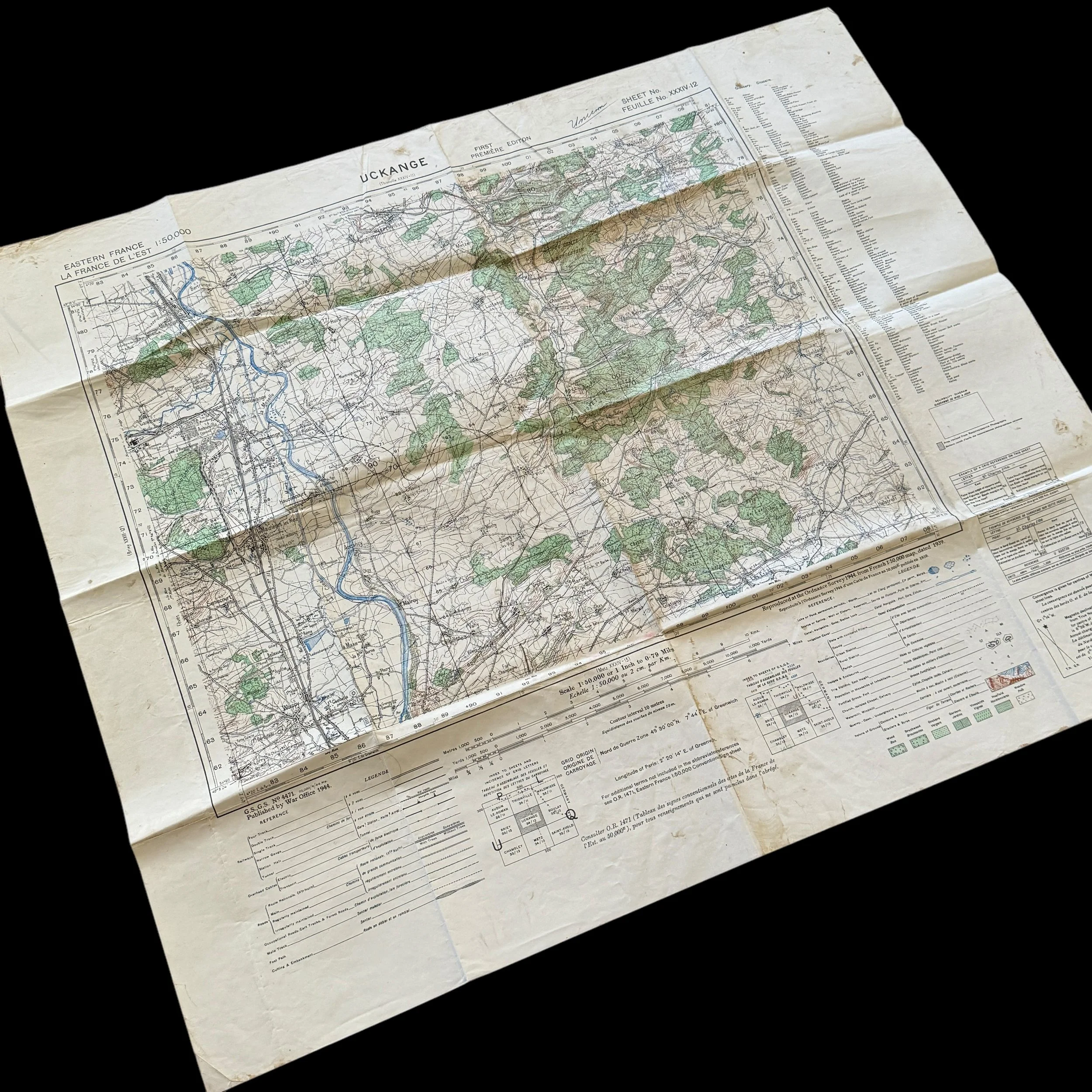

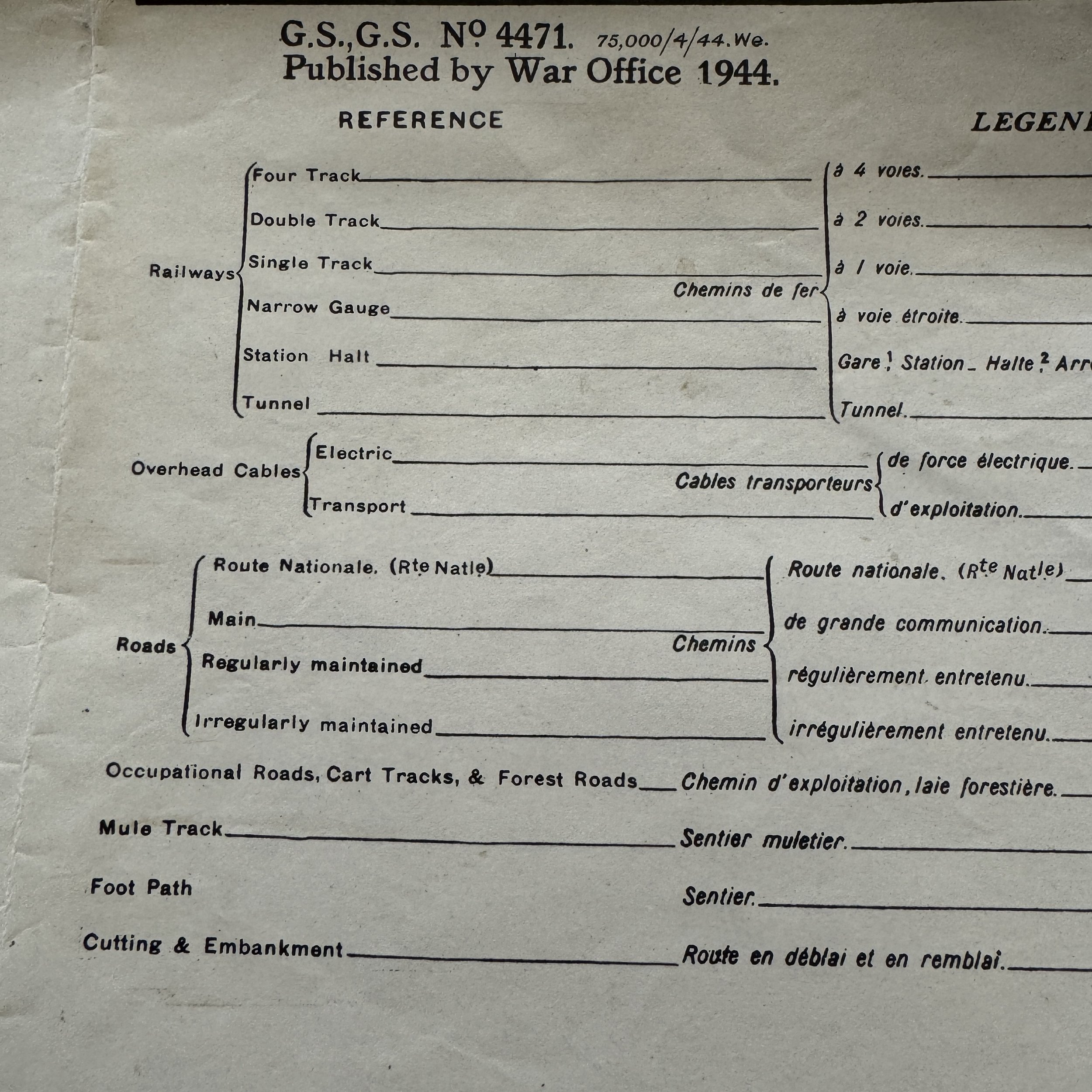

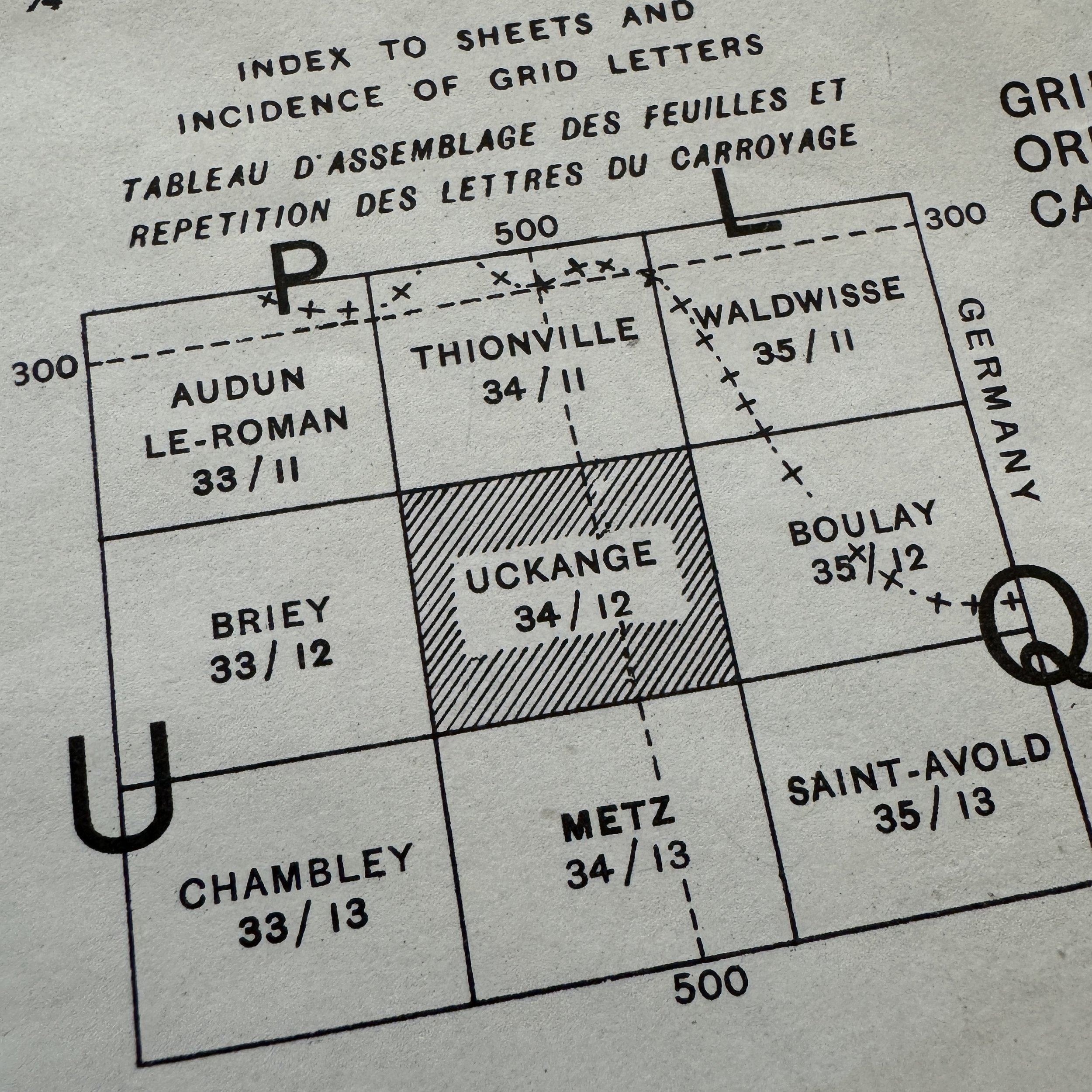
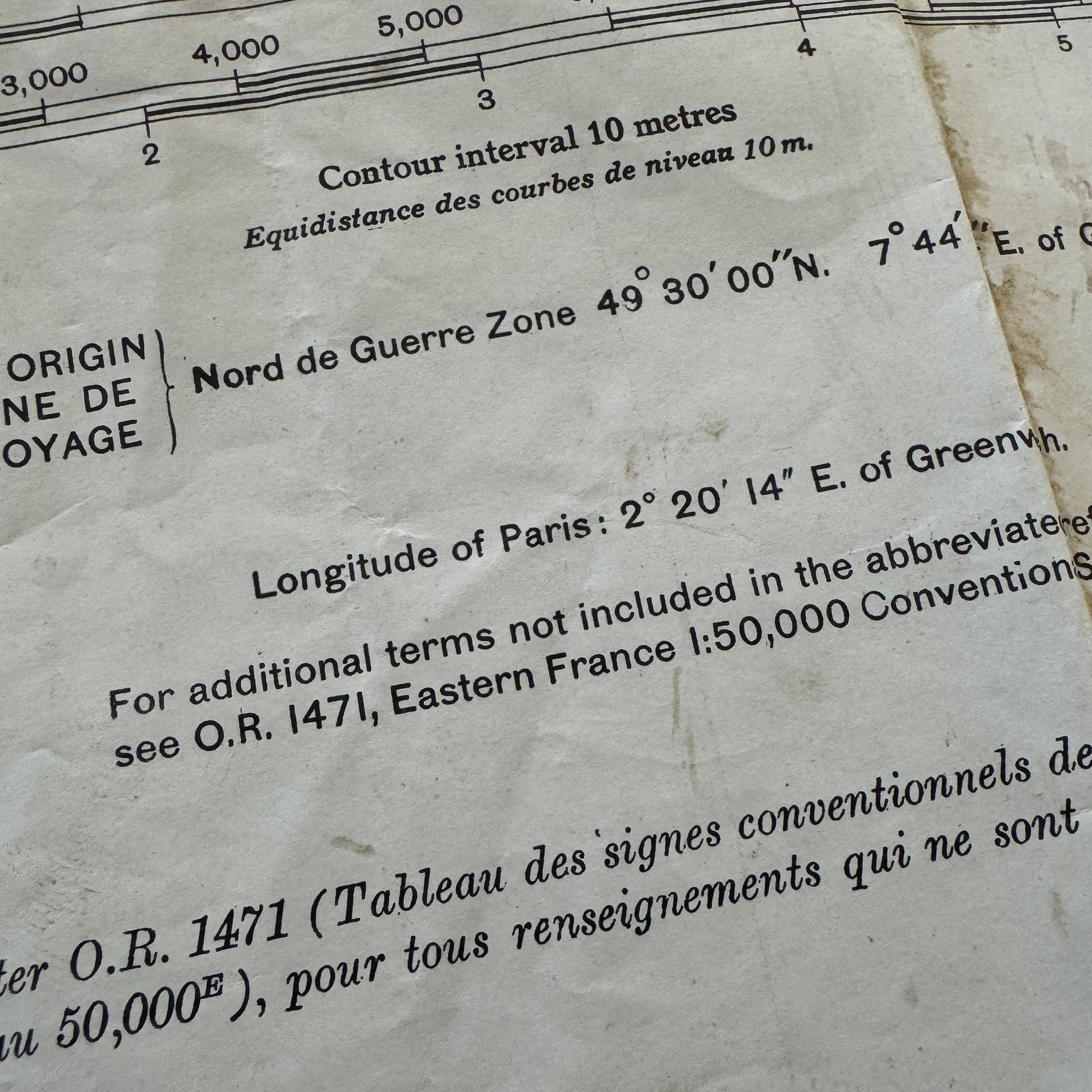

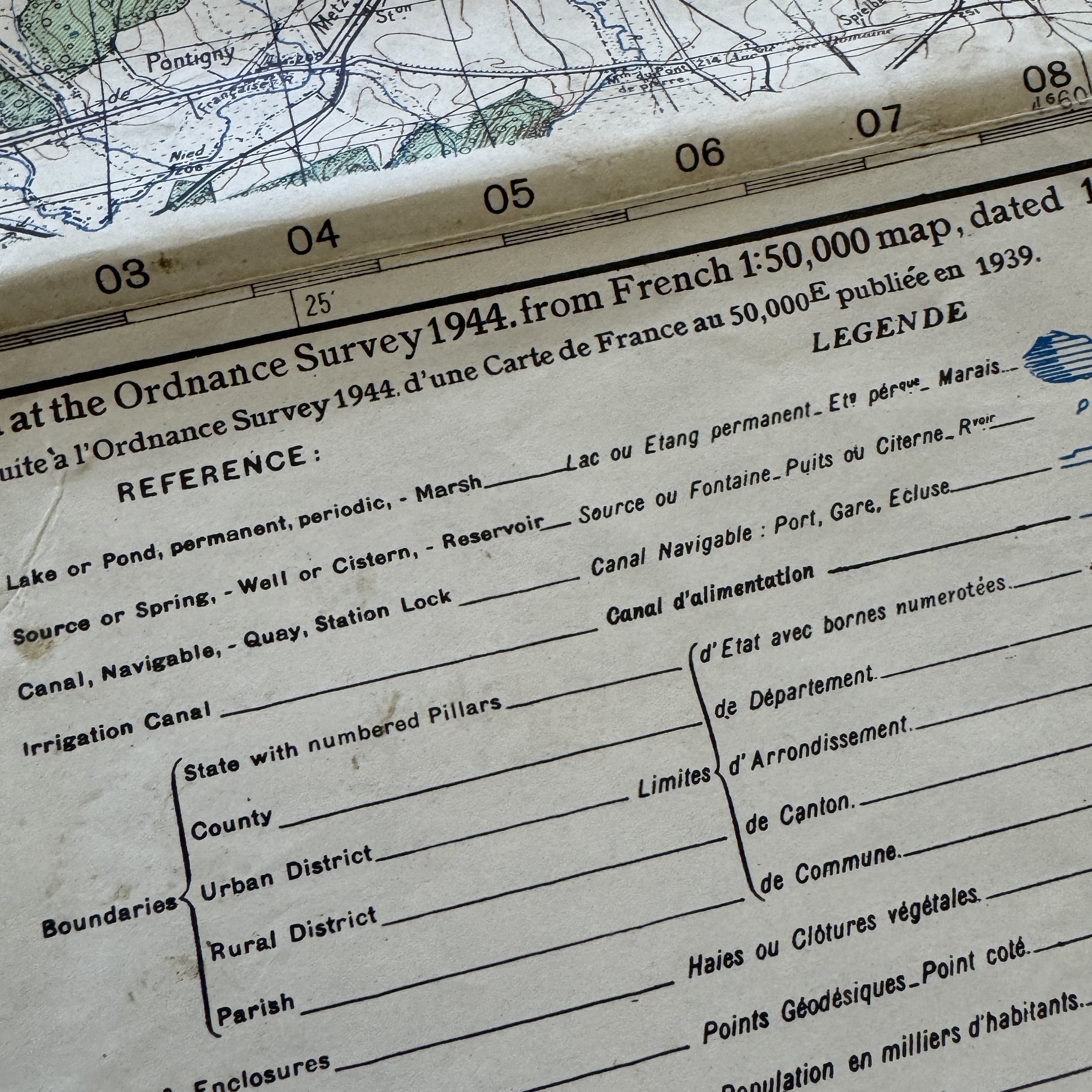
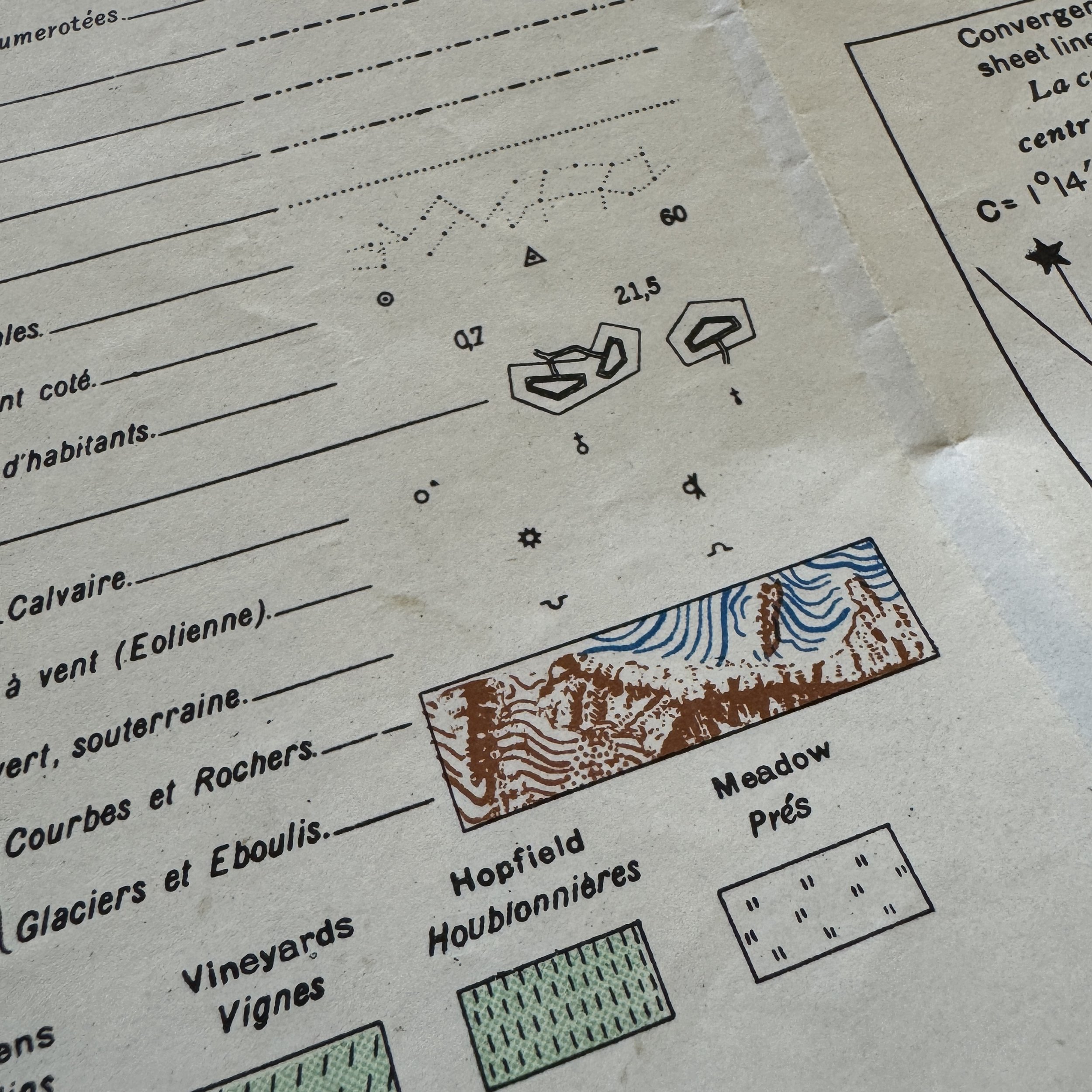


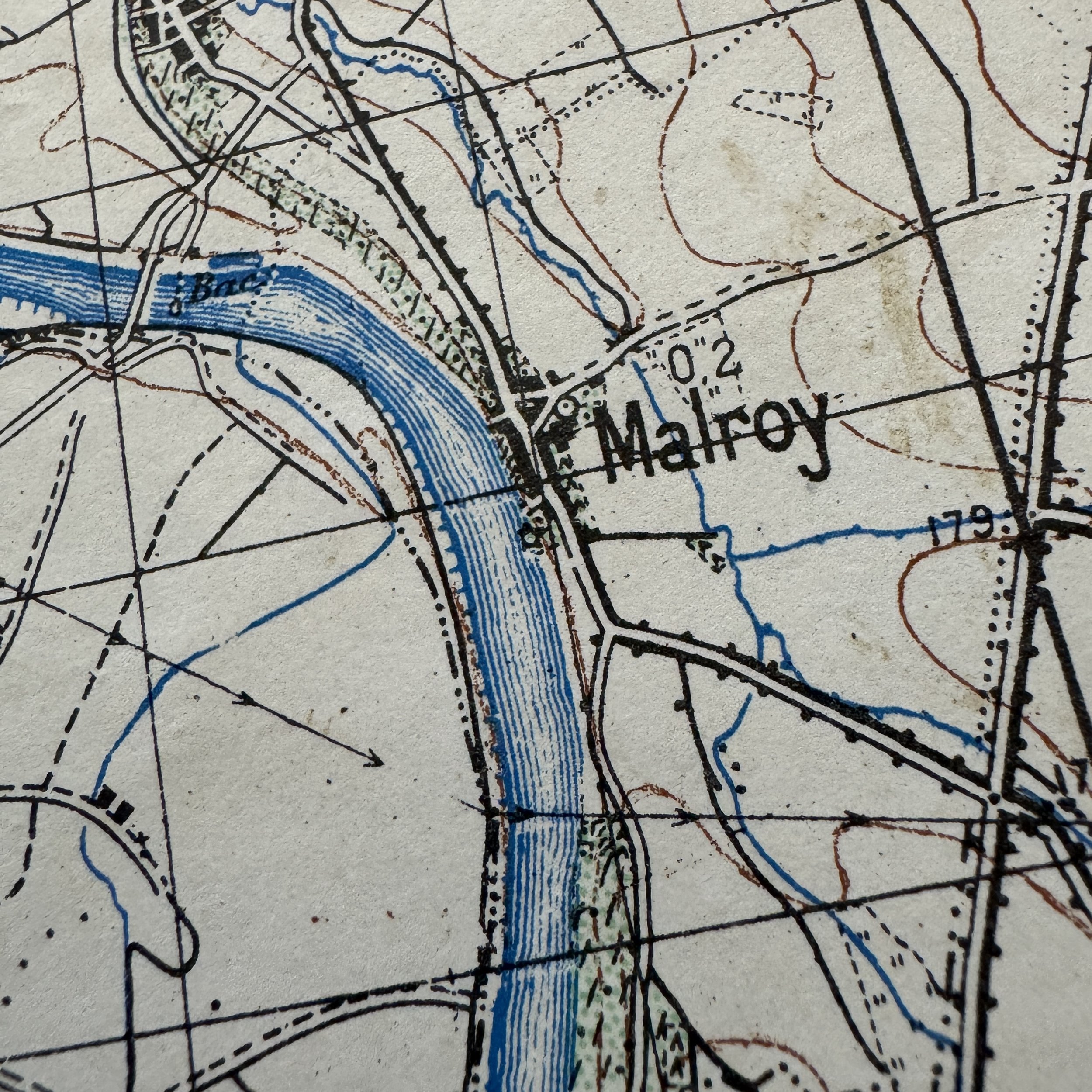


RARE! WWII 1944 Lt. Gen. George Patton’s Third Army "ENCIRCLEMENT OF METZ" Siegfried Line U.S. Soldier Combat Assault Map
Comes with a hand-signed C.O.A
Size: 25.5 × 28 inches
Dated: 1944
This exceptional and historically significant World War II combat map titled “UCKANGE” is a rare, surviving artifact from the U.S. Third Army's drive to capture Metz—a pivotal and fiercely defended German stronghold in eastern France. Used operationally by Lieutenant General George S. Patton’s forces during the Lorraine Campaign in late 1944, this combat map offers a direct connection to the planning and execution of one of the most grueling and tactically complex urban assaults of the European Theater.
As Allied forces advanced after the liberation of France, Patton’s Third Army was given the daunting task of seizing Metz, a city steeped in military history and fortified with layers of German defenses. Situated on the Moselle River, Metz was more than just a city; it was a bastion of resistance guarding the approach to the Siegfried Line and the German border. Surrounded by an intricate ring of fortresses—some dating back to the Franco-Prussian War—and reinforced by Nazi engineers, Metz represented both a physical and psychological stronghold for Hitler’s western defenses.
The assault on Metz was one of Patton’s most formidable challenges. The city was surrounded by more than 40 fortified positions, including casemates, bunkers, and underground tunnels, all manned by a determined German garrison. The terrain was treacherous—thick forests, flooded riverbanks, and mud-choked roads hampered mobility. Compounding the difficulty, late-autumn rains turned the battlefield into a quagmire, while overextended supply lines and staunch resistance turned every mile into a bitter contest of attrition.
The “UCKANGE” map played a critical role in this campaign, guiding the movements of American infantry and armor as they maneuvered to encircle and pressure Metz from multiple directions. Located just north of the city, the town of Uckange and its surrounding terrain served as a staging area for supporting attacks and artillery placement, particularly as Third Army forces attempted to secure crossing points along the Moselle. Every line, elevation, and marking on this map would have been scrutinized by officers directing the complex assault against one of the most heavily fortified urban targets of the war.
Patton, known for rapid offensives, was forced to adapt to the slow grind of siege warfare. Instead of lightning thrusts, the battle for Metz required careful coordination of artillery, armor, and infantry to neutralize strongpoints one by one. Massive bombardments preceded infantry advances, and Sherman tanks, supported by tank destroyers and combat engineers, were used to flank and suppress German positions hidden within dense fort systems.
After weeks of relentless combat, and despite fierce counterattacks and a tenacious German defense, Patton’s Third Army succeeded in capturing Metz by late November 1944. It marked the first time the city had fallen to an enemy in over a millennium, and its capture was hailed as a major Allied victory. The fall of Metz opened the path toward the Saar region and the Siegfried Line itself—the final obstacle standing between Patton’s army and the German homeland.
This victory was not only strategic but symbolic. Metz was considered by the Germans to be impregnable—its fall shattered that illusion and proved the resilience and adaptability of the American soldier under Patton’s command. It was a triumph achieved not through speed, but through grit, coordination, and unyielding determination.
Today, this “UCKANGE” combat map stands as a powerful relic from that campaign—an authentic tool used in the field to bring down one of Nazi Germany’s key strongholds. Its markings and details bear silent witness to the hands that once pored over it, calculating movements that would change the course of the war.
Preserved in museum-grade condition, the map is more than a historical document—it is a frontline artifact of courage and sacrifice. It embodies the complex struggle for Metz, one of the hardest-fought American victories in Europe, and a pivotal step in the final march toward the heart of Germany. Artifacts like this remind us of the high cost of freedom, and the bravery of those who advanced—inch by inch—through mud, fire, and steel to help bring peace to a world at war.